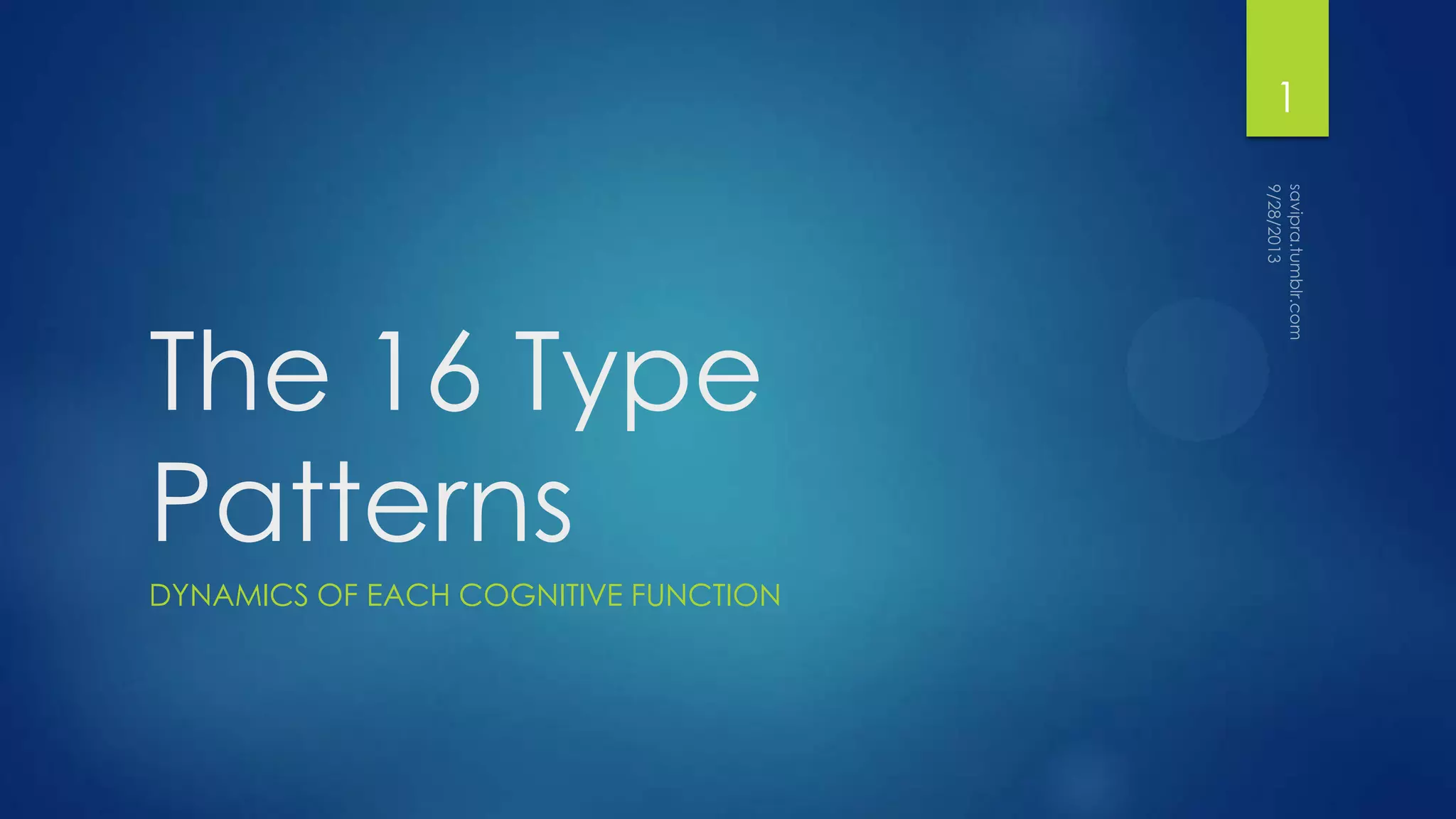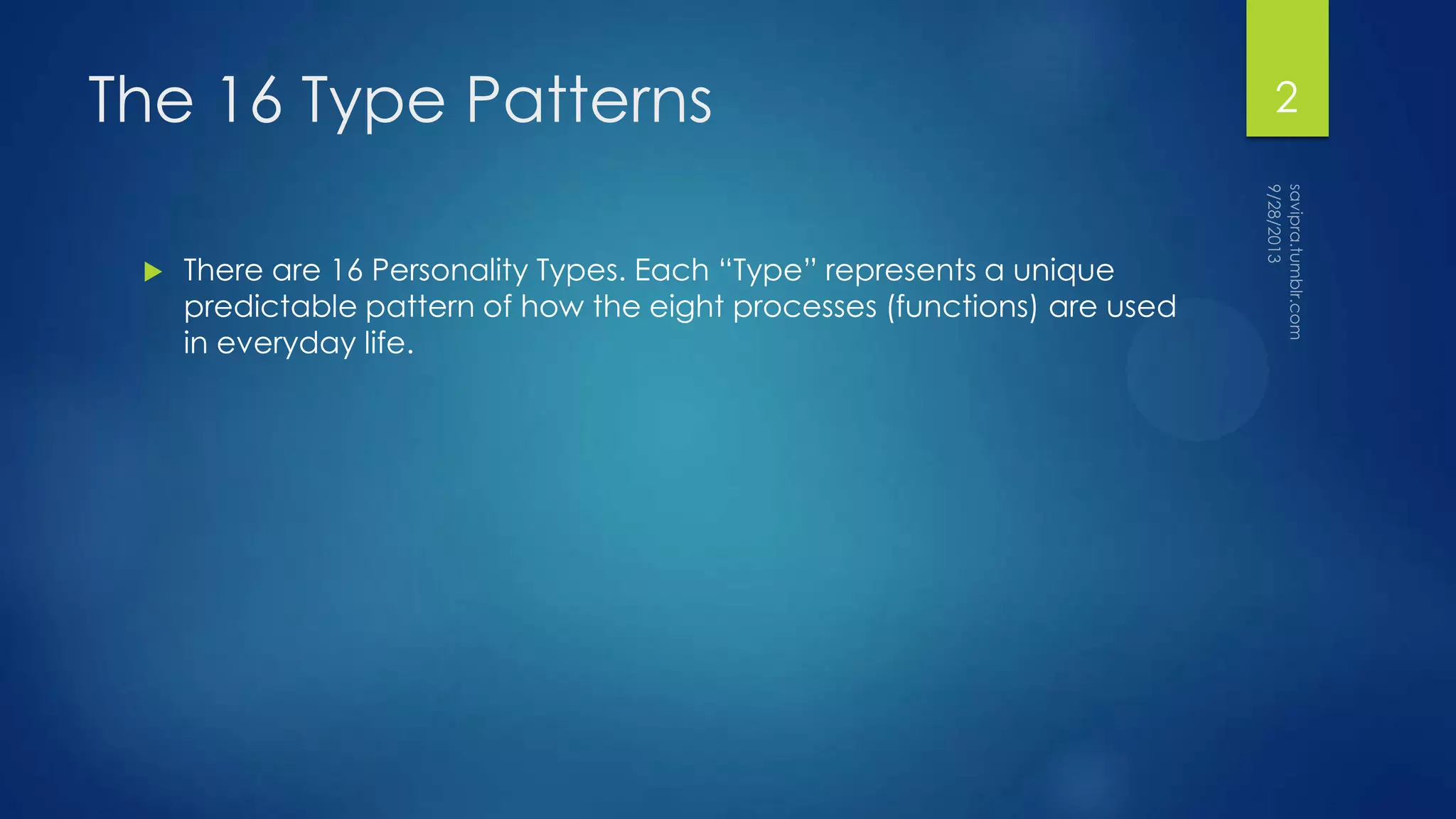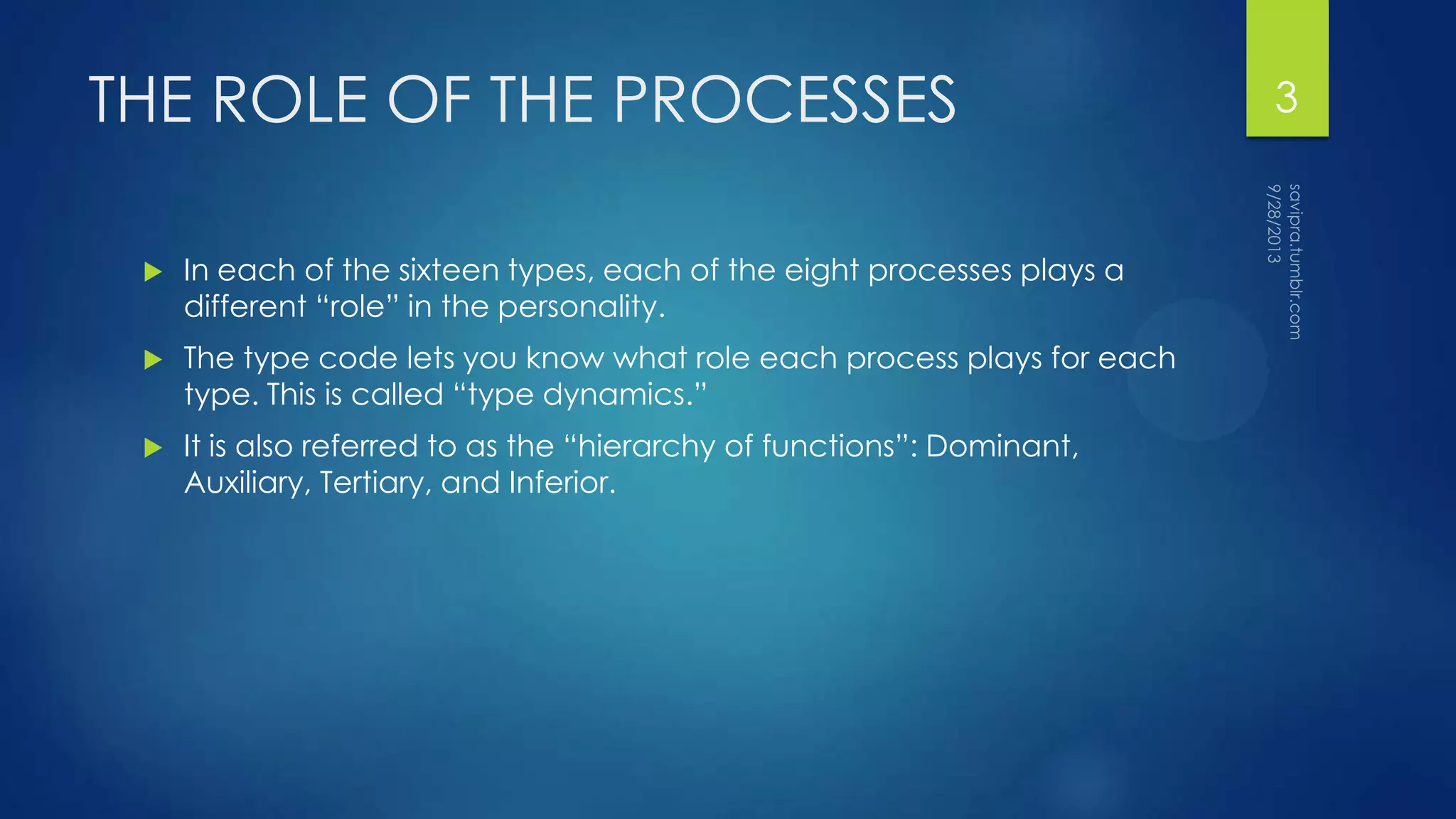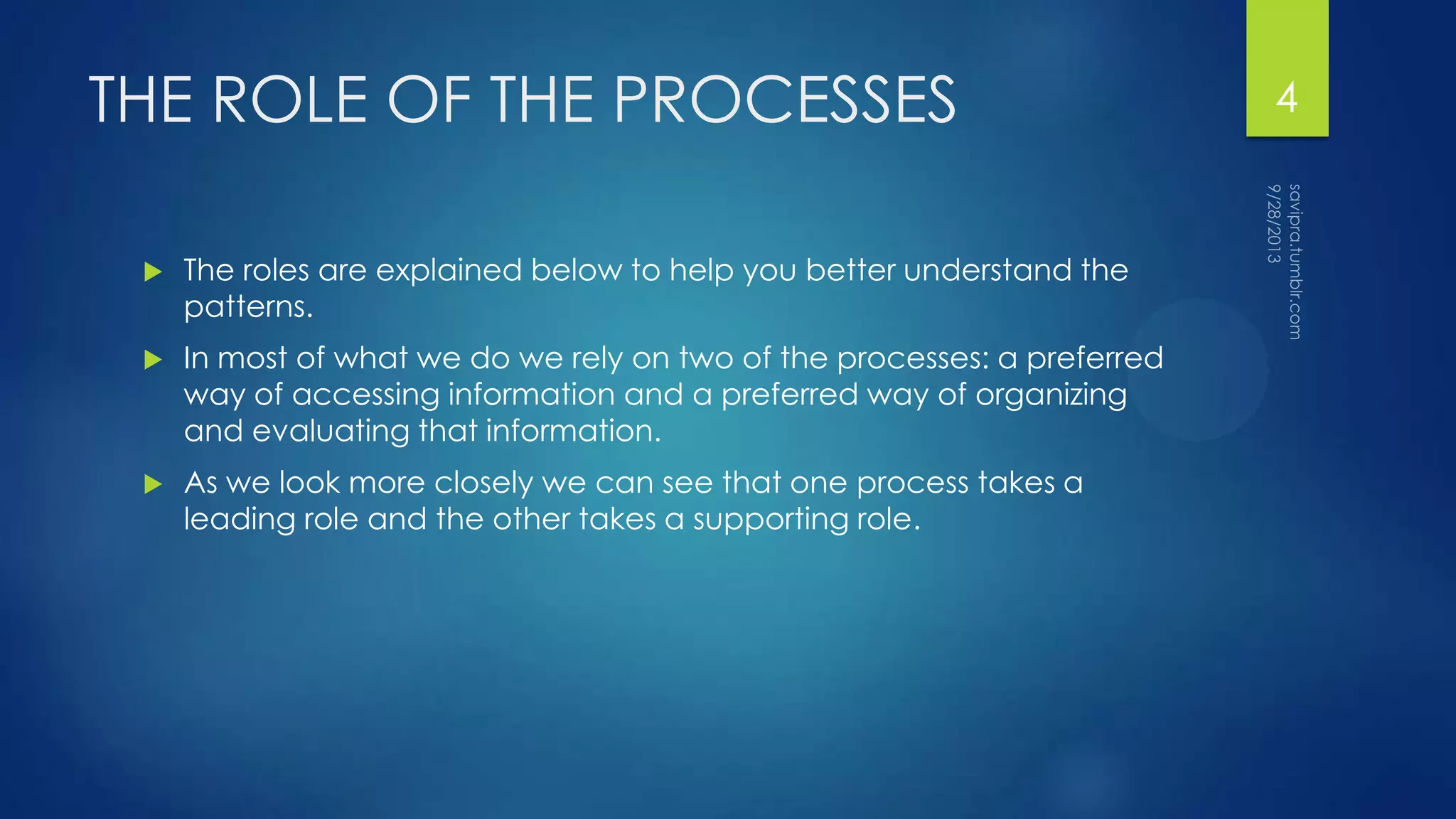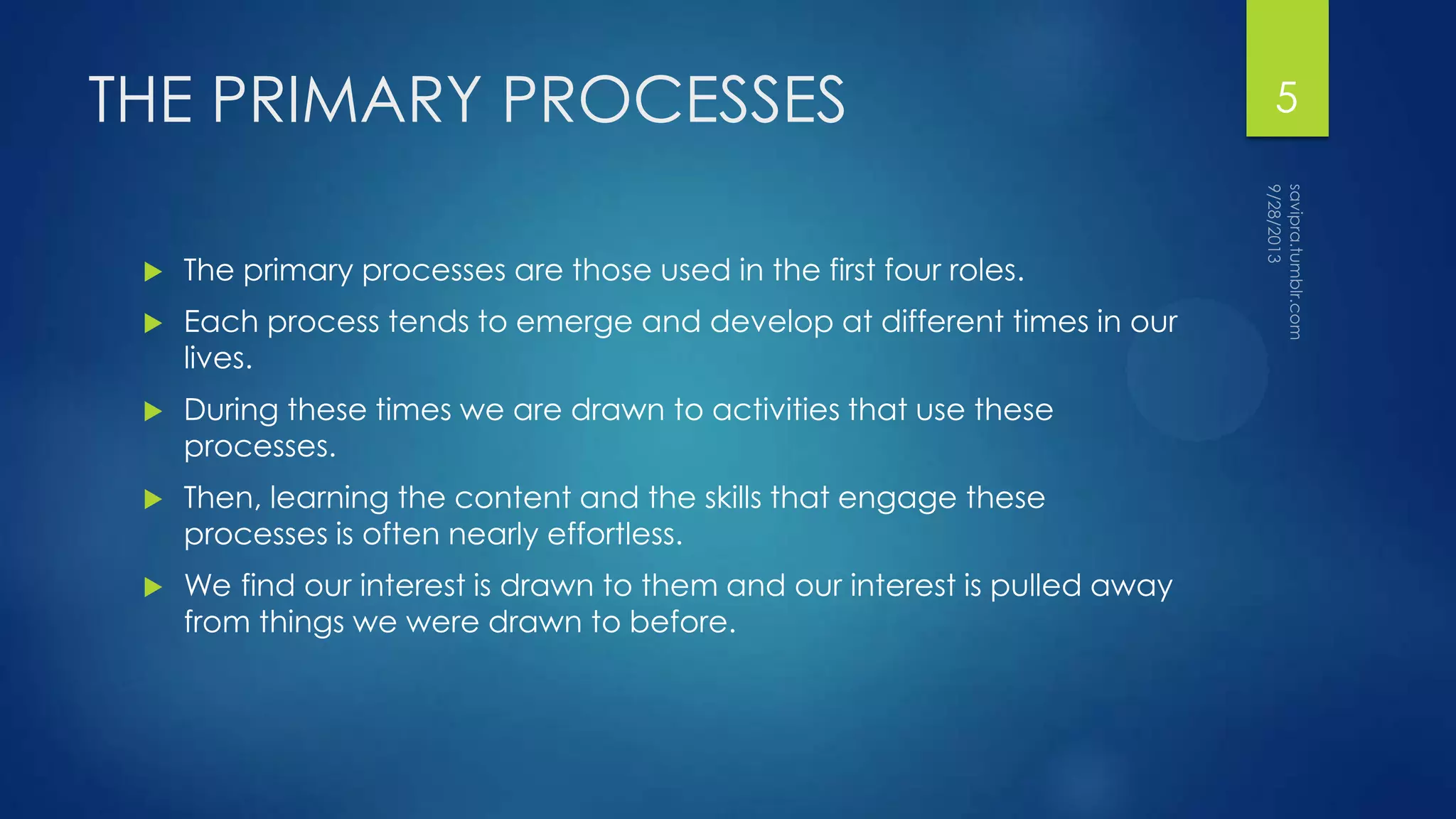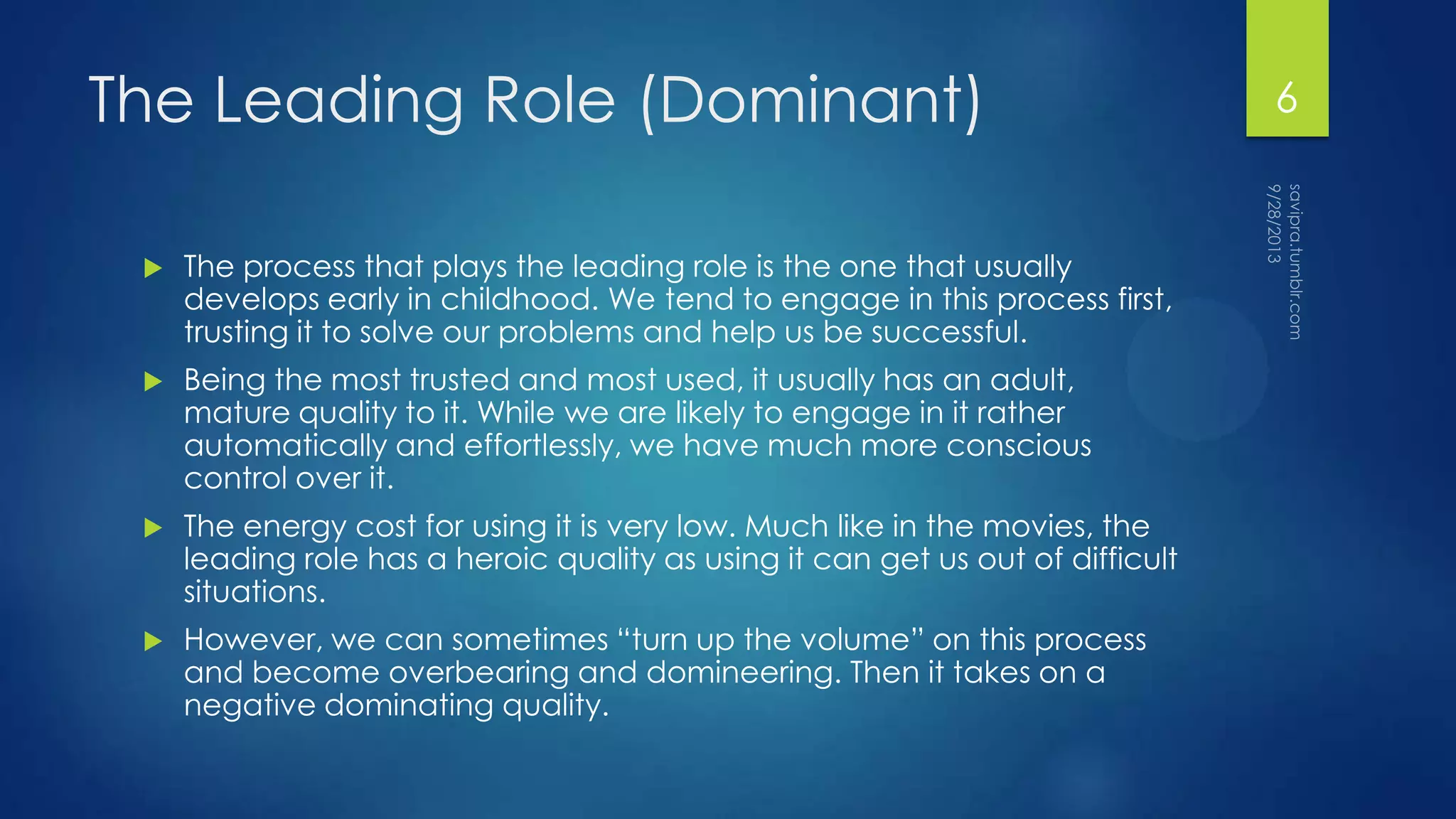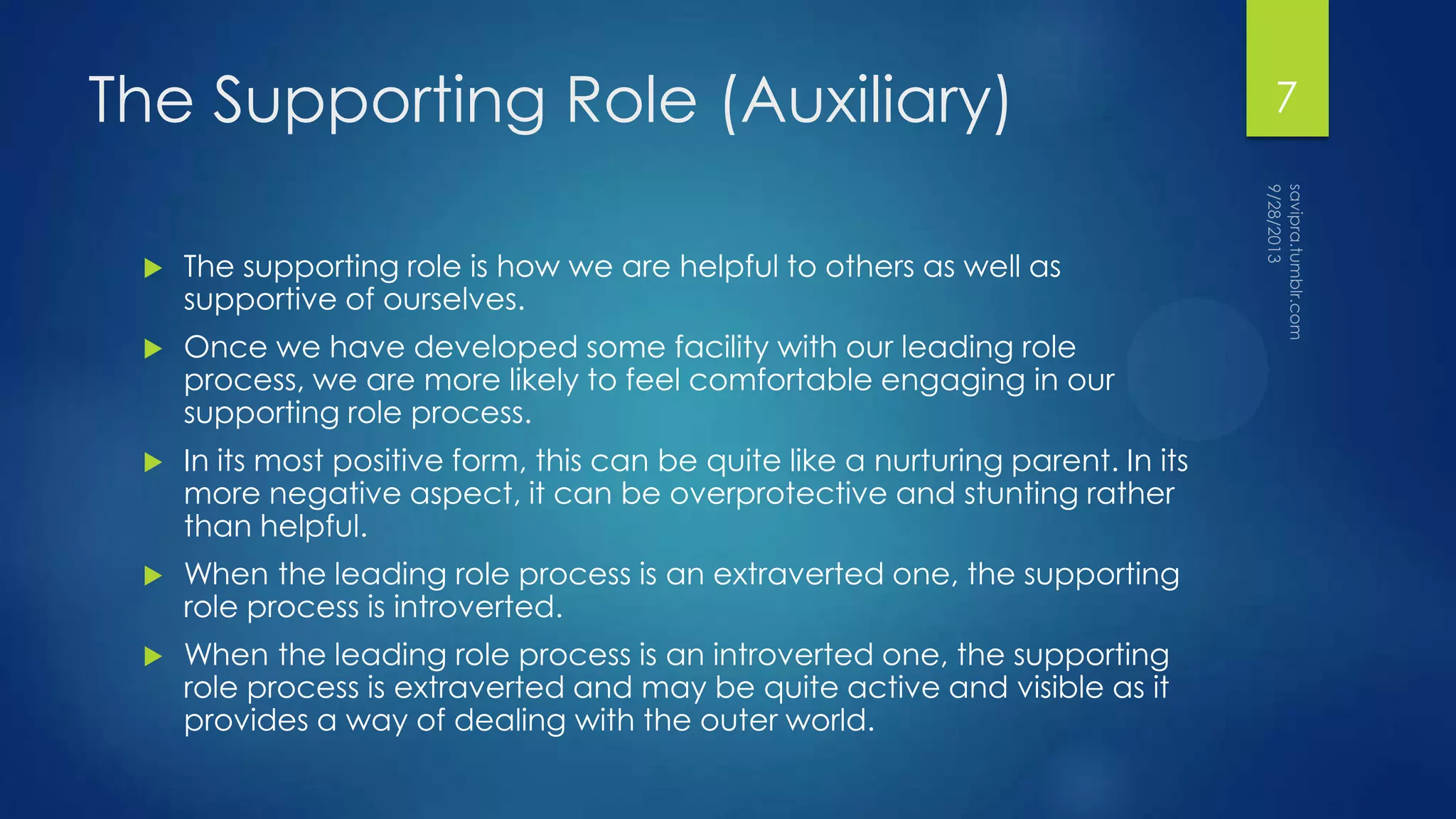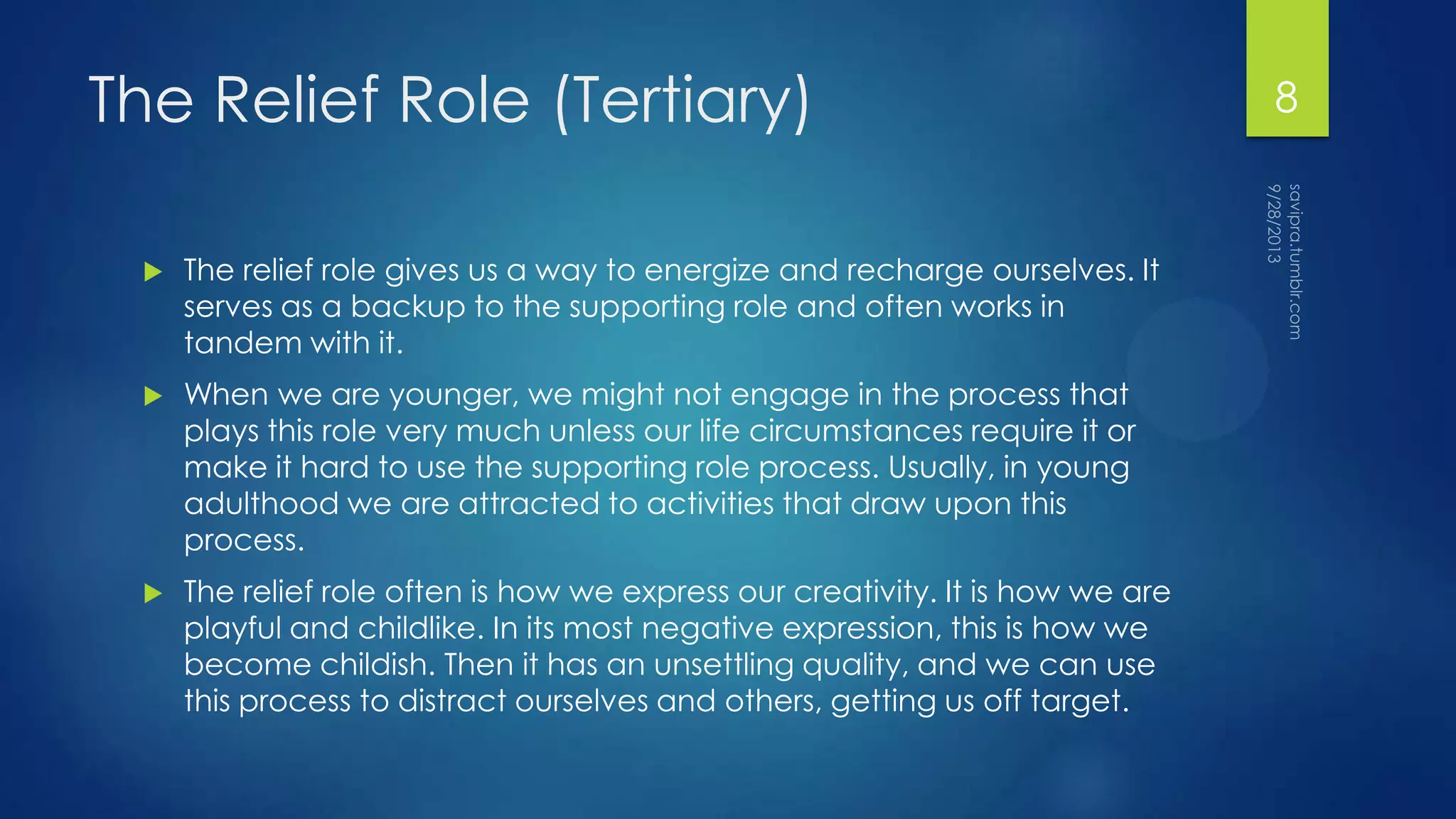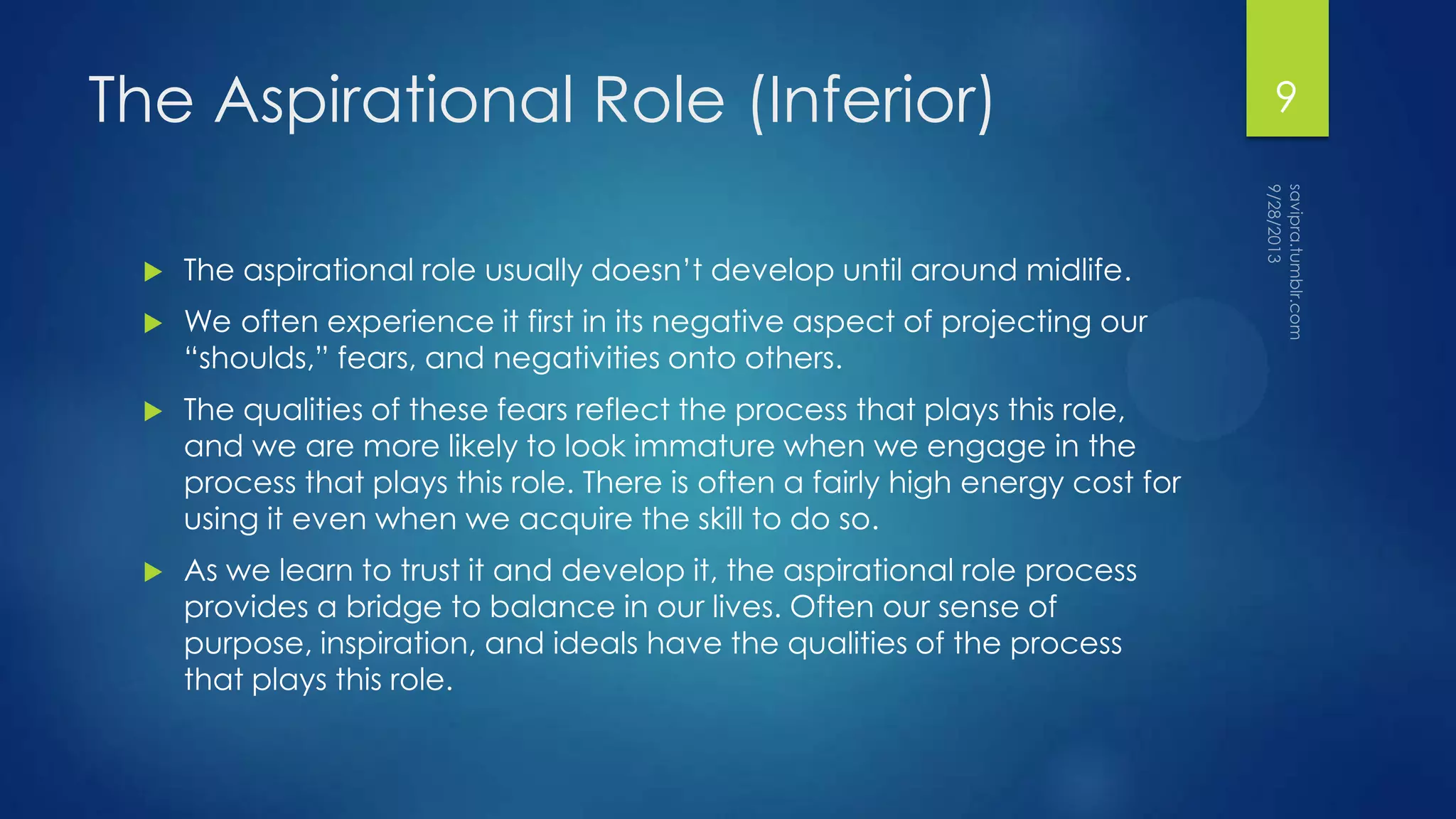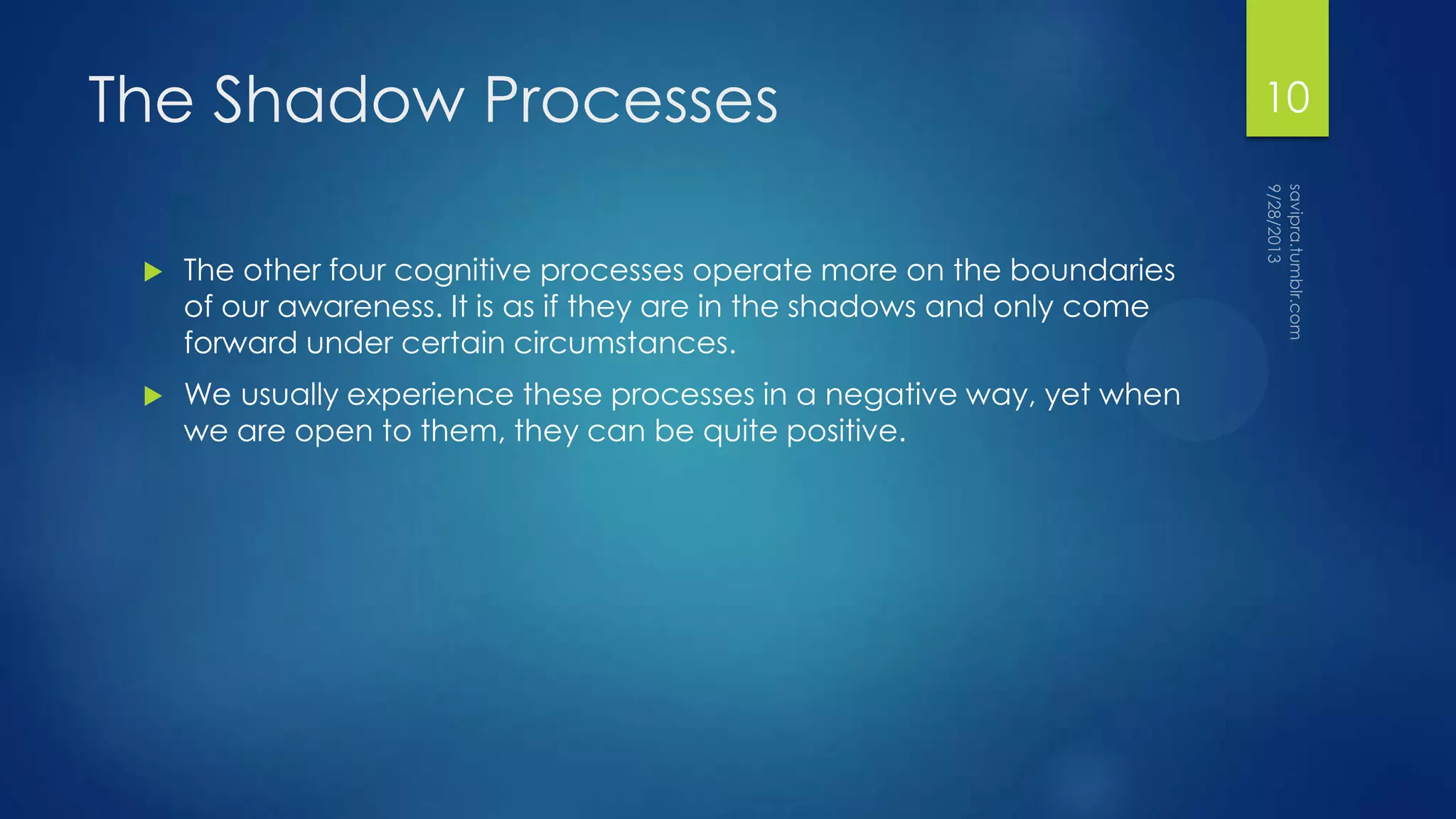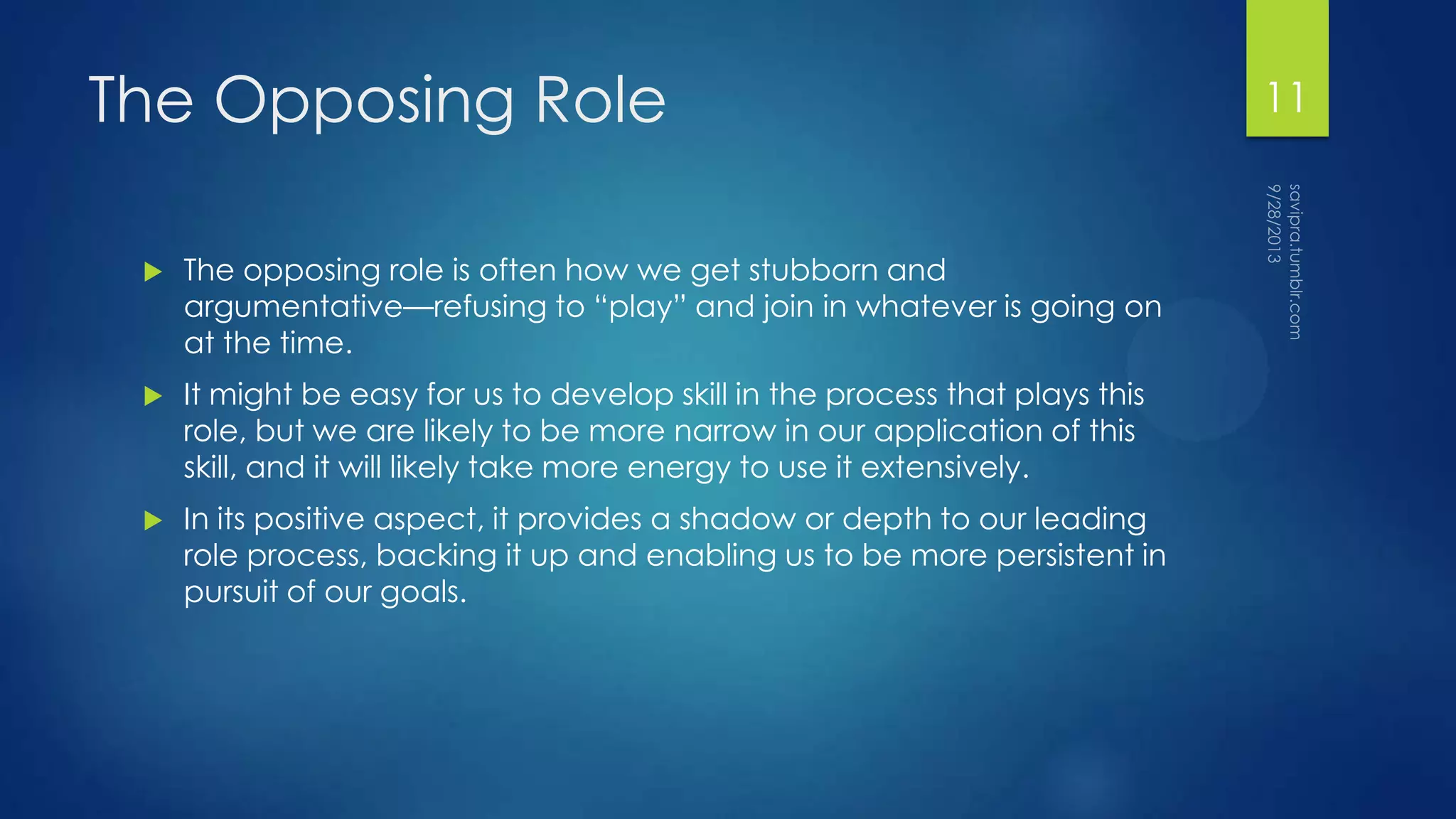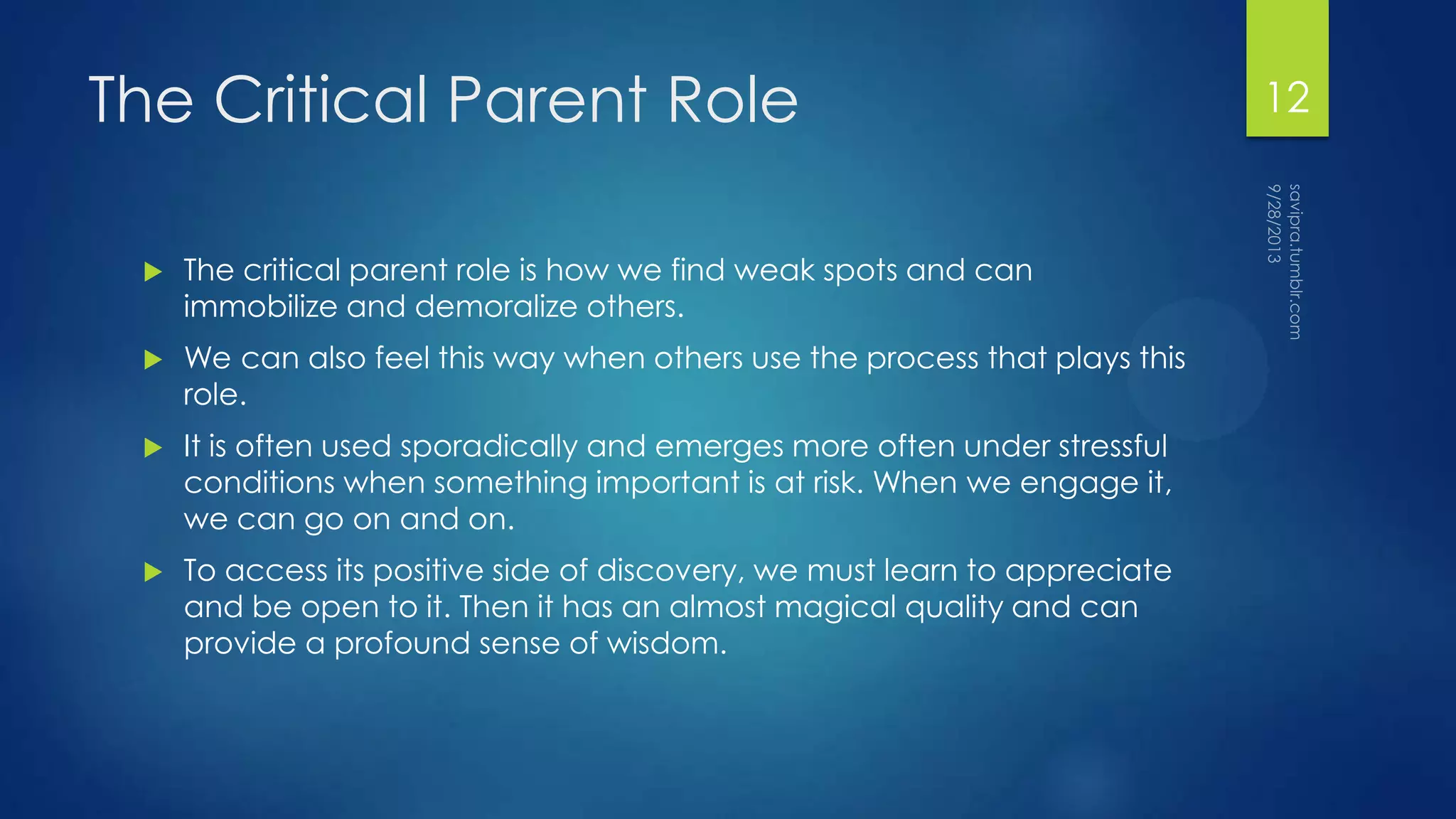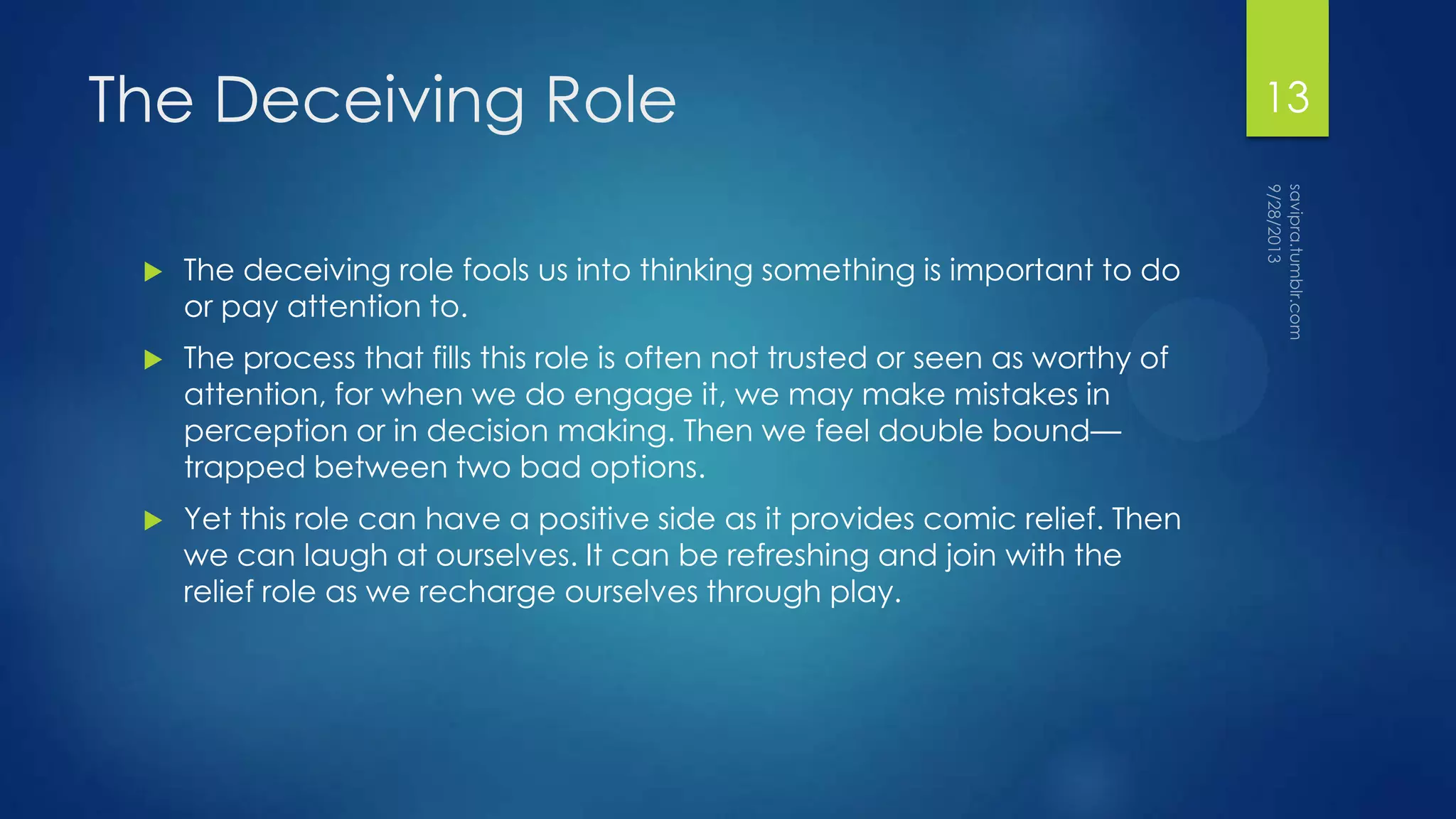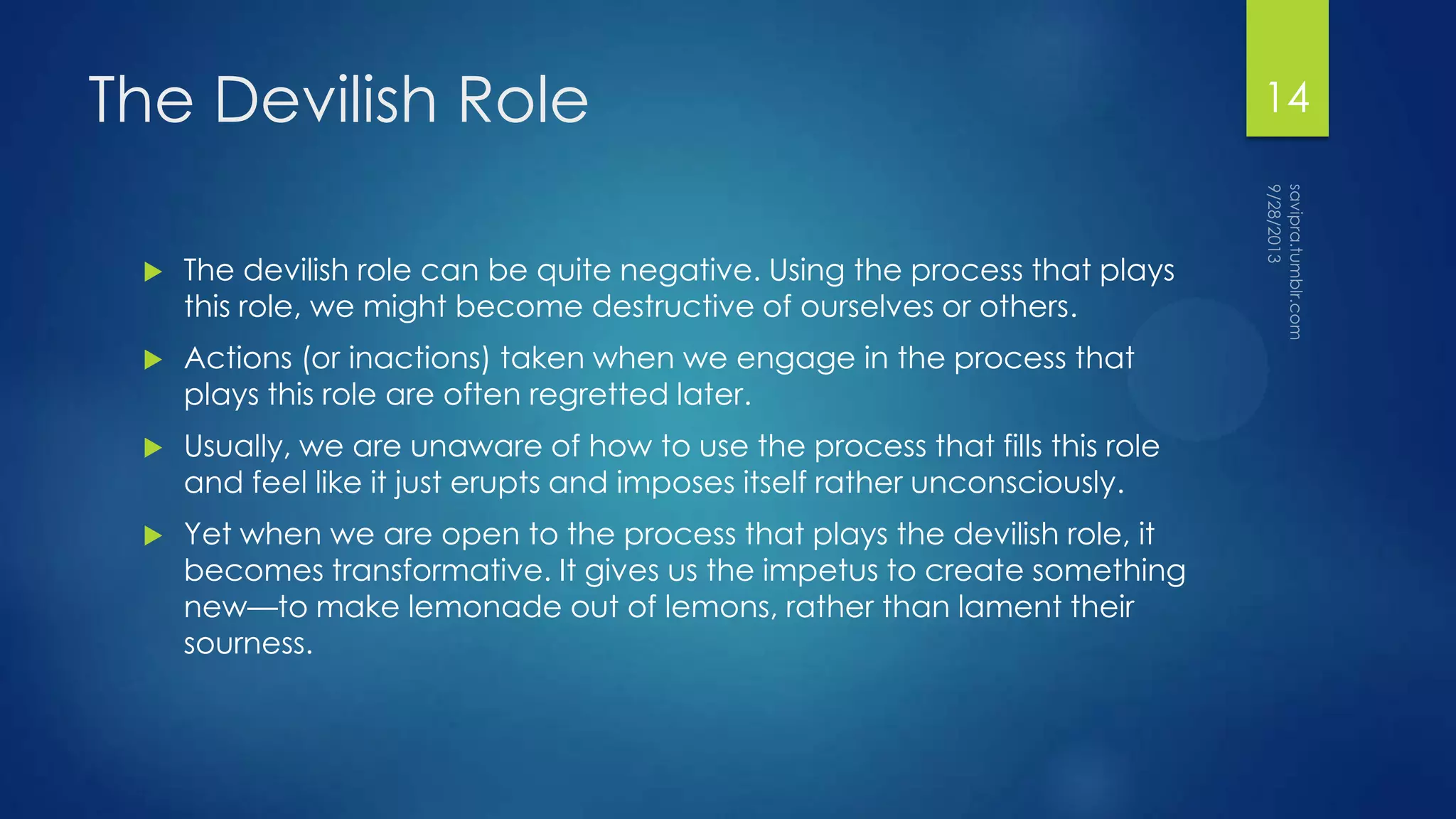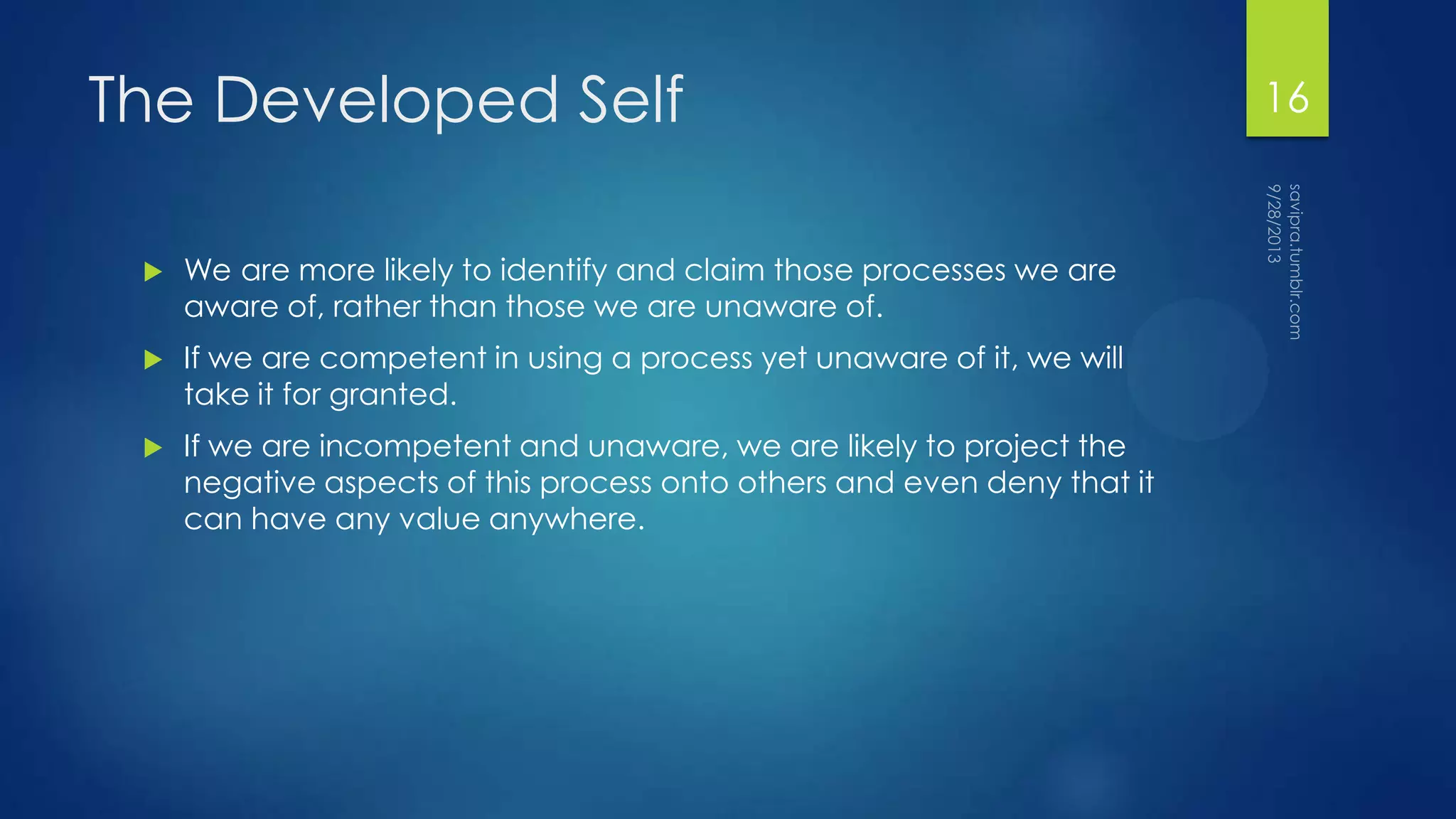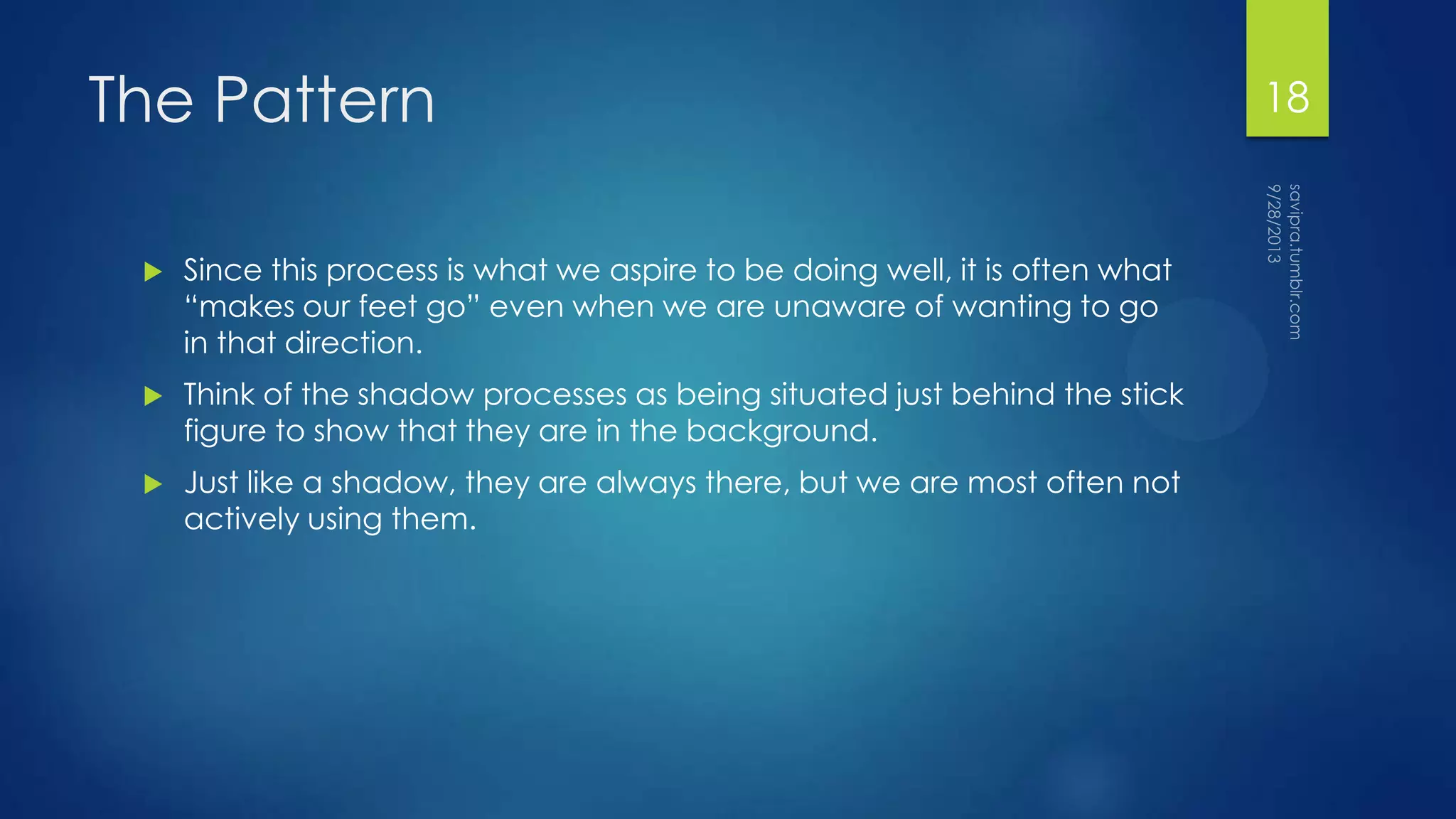The document discusses the roles that the eight cognitive processes play in each of the 16 personality types. It explains that each type has a dominant, auxiliary, tertiary, and inferior process. The dominant process takes a leading role and develops early. The auxiliary process takes a supporting role. The tertiary process provides relief and creativity. The inferior process develops later in life and provides inspiration but is initially experienced through projection. The other four processes operate in the shadows and can be positive if developed. Understanding the hierarchy and roles of the processes provides insight into the unique pattern of each personality type.
